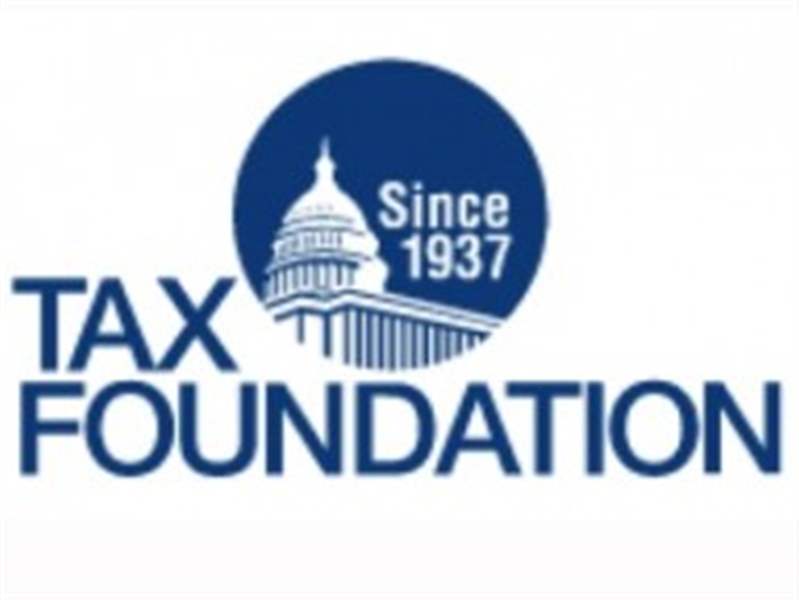
Ohio gives businesses a break on taxes
Study: Burden one of lightest for new and mature firms
3/2/2012
Ohio has one of the lightest state and local tax burdens for business compared to the rest of the country, according to a study by a Washington, D.C. think tank.
In the report, "Location Matters: A Comparative Analysis of State Tax Costs on Business," by the nonprofit Tax Foundation, Ohio has the third-lowest tax burden in the country for newly established businesses. For mature businesses, it has the fifth-lowest tax burden.
In terms of new business, Ohio was helped by "the state's low-rate gross receipts tax combined with incentives such as property tax abatements and withholding tax credits," the study said. "Ohio's property taxes were among the nation's lowest for new manufacturing operations and distribution centers," the report added.
Mature Ohio businesses benefit because the state "does not have a formal corporate income tax. Instead, it imposes a gross receipts tax called the Commercial Activity Tax (CAT)," the tax foundation said. "This low-rate, broad-base tax helped the state score well for corporate headquarters, retail operations, and for capital-intensive manufacturing."
The study was done by the accounting firm KPMG and the Tax Foundation, which describes itself as a nonpartisan tax research group, but has received funding from some conservative groups.
Carol Van Sickle, vice president of public affairs for the Toledo Regional Chamber of Commerce, said the report is good news that the state can tout when trying to attract new business or retain jobs.

"The Tax Foundation really does a good job of analysis. … I think this really nicely represents where the state of Ohio is going, recognizing that all of these factors -- and especially when they're positive in a nationwide comparison -- are very important when attracting businesses that create jobs," Ms. Van Sickle said.
Gov. John Kasich "has been talking about the positives, but the nice thing about this study is it lends some nonpartisan credibility to what's been going on. And the bottom line is about getting jobs for people," she added.
The report said it sought to find how much a business owner or corporate executive would pay in total state and local taxes in each state.
Researchers designed seven model businesses and calculated tax bills in each state. The seven models were: a corporate headquarters, an R&D facility, a retail store, a call center, a distribution center, a capital-intensive manufacturer, and a labor-intensive manufacturer.
The study accounted for corporate income taxes, property tax, sales tax, unemployment insurance tax, capital stock tax, inventory tax, and gross receipt taxes. Each model firm was examined twice -- as a new business eligible for incentives and as a mature firm ineligible for incentives -- and total effective tax rates were calculated for new and mature business models in each state.
Ohio scored well for new businesses, having the lowest total tax rate, 18.3 percent, for new distribution centers, and the third-lowest tax rates for capital-intensive manufacturers and labor-intensive manufacturers at 3.3 percent and 6.2 percent, respectively. It had a 16.8 percent rate (10th) for new call centers, an 11.5 percent rate (9th) for corporate headquarters, a 9.9 percent rate (10th) for R&D facilities, and a 23.9 percent rate (8th) for new retail stores.
For mature businesses, the state had the fourth-lowest rate for retailers at 12.1 percent. Other rates for mature firms were: capital-intensive manufacturers, 6.2 percent (6th); labor-intensive manufacturers, 8.9 percent (12th); call centers, 18 percent (17th); distribution centers, 33.3 percent (35th); corporate headquarters, 12.2 percent (7th), and R&D facilities, 10.1 percent (12th).
Michigan was ranked 25th overall for both mature and new businesses.
The state is tax-friendly to both new and mature labor-intensive manufacturers at a 6.4 percent rate (4th) and 7.7 percent rate (7th), respectively, because of the state's single-sales factor apportionment formula, a generous withholding tax rebate and investment tax credit, and a low sales tax of 6 percent, the report said. Michigan also was helpful for new and mature call centers with rates of 13.4 percent (8th) and 16.4 percent (9th), respectively, thanks to generous tax incentives.
But the Tax Foundation said Michigan businesses are hurt by the state's high property taxes, which are the fifth-highest in the nation, and its 6 percent corporate tax known as the Michigan Business Tax.
Gary Fitzpatrick, co-owner of two Learning Express toy stores in the Toledo area and one in Ann Arbor, said his tax burden in Michigan is higher because of the Michigan Business Tax. "The [commercial activity] tax in Ohio doesn't seem to be a huge burden. But the MBT can be significant," he said.
"Property taxes are higher there. They do affect us even though we don't own property because it gets passed onto us," Mr. Fitzpatrick said.
Sales tax in Michigan is lower -- 6 percent versus 6.75 percent in Ohio. But for a retailer, Michigan has another high tax burden -- gasoline taxes -- that did not make it into the study, Mr. Fitzpatrick said.
"Gasoline taxes are substantially lower in Ohio. That affects retail. It's 5 to 10 cents a gallon higher in Michigan and that means people have fewer dollars to spend to buy things," he said.
Contact Jon Chavez at: jchavez@theblade.com or 419-724-6128.